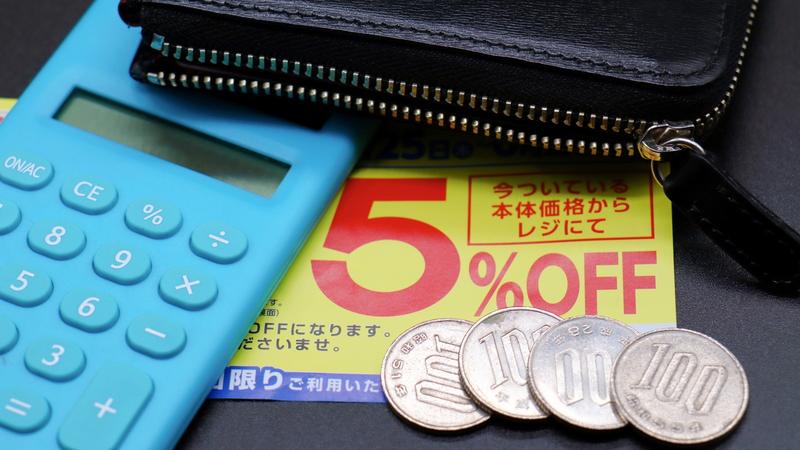Super important "pricing" of retail stores, 5 rules that make you feel "bargain" [Series] "How to make" a profitable retail store
Solving business issues by integrating IT and management
What is Business + IT?
Login
E-mail newsletter registration
What is Business + IT?
Sales StrategyCost reductionOrganizational reformProduction / manufacturingcrisis managementcomplianceEnergy saving and environmental friendlinessBy industry / scaleCore systemInformation systemOperation managementSecuritynetworkmobilehardwaredevelopmentRelated genres
Five rules that make retailers feel super important "pricing" and "bargain"
[Series] "How to make" a profitable retail store
It has been pointed out that the "pricing strategy" is the most important strategy for retailers, beyond the location strategy and product lineup strategy. Pricing strategy approaches include (1) "to procure products at low purchase prices and reduce SG & A expenses in order to provide products to customers at the lowest possible prices," and (2) "to customers at the sales floor." There are two directions, "to make you think it's a good deal". This time, I will explain how to get the feeling of "profit" in (2) with examples.
Takashi Teramoto, Professor, Graduate School of International Social Sciences, Yokohama National University
Takashi Teramoto, Professor, Graduate School of International Social Sciences, Yokohama National University
Professor, Graduate School of International Social Sciences, Yokohama National University. Born in Yokohama in 1973. He graduated from Keio University Faculty of Commerce and completed the doctoral program at the Graduate School of Business Sciences, University of Tsukuba. He is a Ph.D. (Business Administration). He has been in his current position since 2020 after working as an over-the-counter research and development office manager at the Institute of Distribution Economy, an associate professor at the Faculty of Business Administration at Meisei University, and an associate professor at Yokohama National University. His major works include "Retail Brand Communication" (Chikura Publishing) and "Supermarket Brand Theory" (Chikura Publishing).
- Karakuri that consumers feel "bargain"
- What% OFF is best?How to show just the right "discount amount"
- Just the right "increase" and "bonus" law that makes you want to buy
- Which do you feel is more profitable, "discount" or "give points"?
Karakuri that consumers feel "bargain"
The "profitable feeling" that consumers feel when purchasing a product is called "perceived value" in consumer behavior theory and marketing theory. The perceived value is expressed by the formula "perceived value = perceived benefit / perceived cost". The "perceived benefit" here refers to the merits obtained from the performance, quality, and accessories of the product, and the "perceived cost" is the amount of money to pay for the product and the time and effort required to buy it (a heavy item that goes to the store). It refers to the disadvantages such as carrying. In other words, in order to increase the perceptual value that points to a good deal, there are two patterns: a pattern that suppresses the perceptual cost that points to the demerit, and a pattern that enhances the perceptual benefit that points to the merit. What% OFF is best?How to show just the right "discount amount"
First, let's start with a strategy to curb "perceived costs," which refers to the disadvantages for consumers (such as the amount of money to pay for a product and the time and effort required to buy it). This strategy is called "integrated promotion" because it is an incentive that is integrated with the actual selling price through the form of "discount" from the regular price. Here, I would like to introduce two concrete examples. The first is the effect of displaying the discount amount as a set. Often there is a special sale display that shows two pieces of information, such as "15% OFF 298 yen", the discount rate and the amount after the discount, but for a medium discount of about 10 to 20%, "15% OFF (50) Adding an "actual discount amount" such as "yen discount) 298 yen" makes it easier for consumers to have a "profitable feeling" (Note 1). On the contrary, when the discount rate is small (a few percent discount) or a large discount rate (a discount of about 40 to 50%), adding the actual discount amount will reduce the "profitability". This is because when you show the actual discount amount when the discount rate is small, you may think "Eh ... this is it?", And when the discount rate is large, you may be suspicious as "Is it so cheap?" be.Related article ▲ Close ▼ Show all
The second is the difference between the absolute amount display and the discount rate display in discounts. For example, in the absolute amount display such as "50 yen discount" and "300 yen discount" and the discount rate display such as "15% OFF" and "40% OFF", the latter lowers the expected future price of the target product. There is an experimental result that it is possible to suppress the decrease in selectivity after the discount period ends (Note 2). This result shows that the discount rate display has the effect of suppressing the decline in the expected price held by consumers and the effect of suppressing the reaction of the refraining from buying after the bargain sale. In this way, in the strategy to suppress the perceived cost, there are the "offensive" strategy like the set display of the discount amount and the "defensive" strategy to suppress the recoil like the discount rate display. [Next page] The right "increase" and "bonus" rules that make you want to buyRecommended articles
Brand improvement / marketing / PR genre topics
To List
IT introduction support information for brand improvement / marketing / PR genre
To List
PR
SB Creative Co., Ltd.
Business + IT is operated by SB Creative Corp. of SoftBank Group.
By registering as a business + IT member, you can subscribe to member-only content and e-mail newsletters, and invite you to special seminars!

![Super important "pricing" of retail stores, 5 rules that make you feel "bargain" [Series] "How to make" a profitable retail store](https://website-google-hk.oss-cn-hongkong.aliyuncs.com/drawing/article_results_9/2022/3/9/add08b863e70babacc812e94936b8ab5_0.jpeg)

